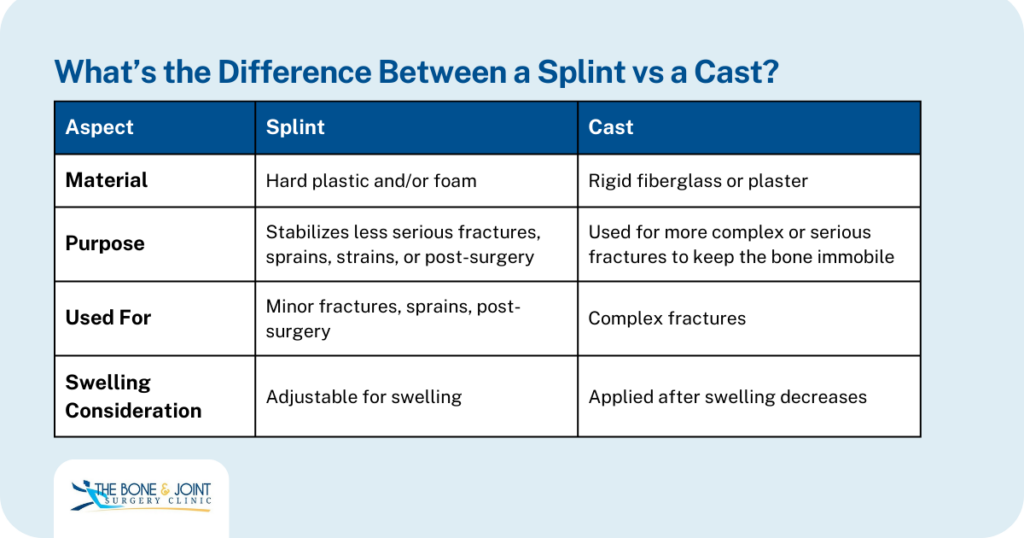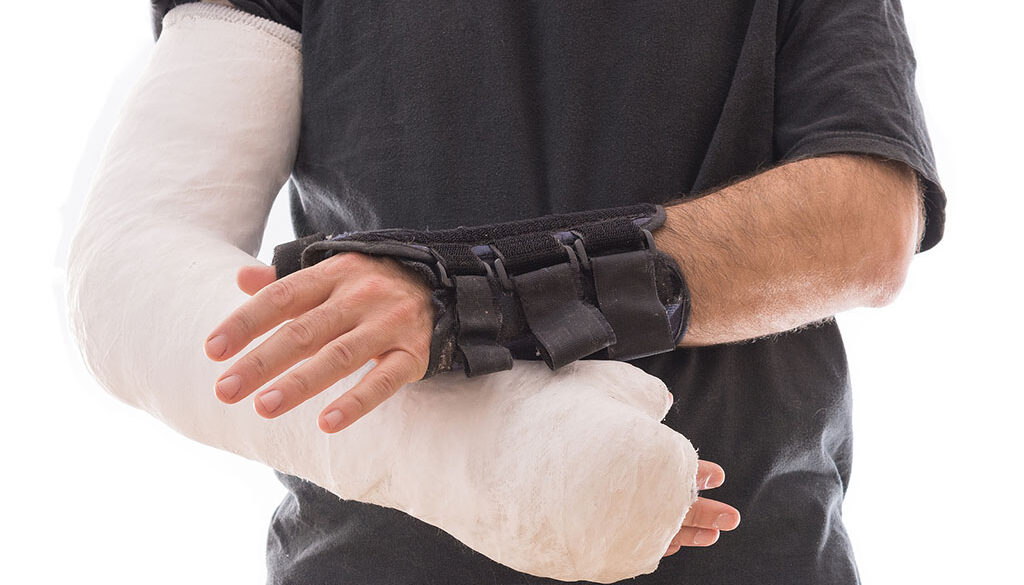When Would You Need a Splint vs. a Cast? How to Tell
Whether you broke your arm after a nasty fall or you’re experiencing pain from carpal tunnel syndrome, you may have heard one of your doctors mention the need for a splint or a cast. While people tend to use these words interchangeably, they’re not the same thing. There are specific instances when you would need a splint vs. a cast.
Treating patients with splints and casts is one of the most common therapies at Raleigh Bone Joint. We’ll determine whether a splint vs. a cast would be best for you, and most importantly, we’ll tell you how to take care of yourself to minimize the time you need to be in one.
Splint vs Cast: When Are They Used?

The main difference is that a cast is made of hard, rigid material–usually fiberglass or plaster. They’re used for more complex or serious fractures and ensure that your bone remains immobile so it can heal.
A splint, made of hard plastic and/or foam serves a similar purpose but may be used for less serious fractures. Splints can also serve as stabilizing devices after an injury or procedure like hand surgery or to alleviate sprains and strains.
Splints are also used when there is extensive swelling in the area. Splints often have velcro bands that enable you to adjust the tightness for increased and decreased swelling. A cast is typically only applied after swelling has gone down.
What Types of Injuries Require a Splint or Cast?
As we mentioned earlier, you would need a cast if you had a serious or extensive fracture. If you had a minor fracture, we may be able to treat it with a splint.
What does a splint/cast do? It keeps an area stable or immobile so healing can occur.
Other conditions that can require a splint or cast include:
- Injuries to your tendons or ligaments
- Strains
- Repetitive motion injuries like carpal tunnel syndrome
- Sprains
- Dislocations
- Joint instability
If you’ve had surgery, we may suggest wearing a splint until more healing has occurred. Don’t worry–we know you want to get out of your splint or cast as soon and get back to your regular activities! That’s why we’ll regularly evaluate your progress to ensure you can return to your routine as soon as it’s safely possible.
Can I Take My Splint Off?
We know a splint can be itchy and uncomfortable, but you shouldn’t remove it unless we say it’s okay to do so. If you remove it prematurely, it can delay your healing and be detrimental to your progress.
However, every situation is different, and some injuries and conditions are more extensive than others. In short, speak with us before taking your splint off. We’ll provide detailed instructions about how, when (and if) it’s okay to remove your splint.
Can You Shower With a Cast/Splint?
You can take a shower with one, but it’s crucial that they don’t get wet. There are several tips and techniques on how to protect your splint or cast—just ask us and we’ll be happy to provide some of our tips.
Our Board-Certified Orthopedic Doctors in Raleigh Are Ready to Help You If You Need a Splint or Cast
Fractures, strains and sprains can create stress in your everyday life. We want to set you on the path to recovery by providing stability through splinting or casting so your bones and soft tissue can heal. For more than 50 years, we’ve been serving Wake County residents, providing them quality, compassionate care coupled with convenience.
We invite you to see why we are the area’s premier orthopedic practice.
Did you know we have same-day appointments? Or you can easily schedule a regular appointment by contacting us.
The content within this article and others on this website is only for educational purposes and should not be considered as medical advice. For any questions or concerns, please consult with your healthcare provider.


